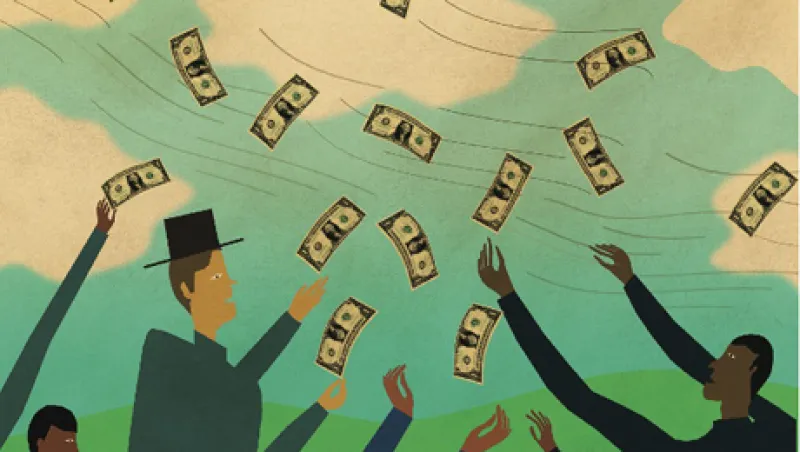This summer Bank of America Merrill Lynch gave its wealth management clients a chance to profit by going green. BofA Merrill began offering them World Bank Green Bonds, following June’s $2.1 million sale with a $7.7 million round that closed in early August.
“It was our view that our investors, given the same returns as a regular bond, would want to take the opportunity to do something good for the world as well,” says Lenore Kistinger, a New York–based associate on the bank’s debt capital markets team. Since this retail offering, Kistinger notes, BofA Merrill has been fielding inquiries about green bonds from institutional investors.
Launched by the Washington-based World Bank in November 2008, the triple-A-rated green bonds finance projects that tackle problems associated with climate change. The roughly 25 projects they support include wind power installations in China and Egypt, waste management programs in Brazil and Colombia, and reforestation initiatives in China and Tunisia.
The first organization to issue green bonds, the World Bank had created earlier fixed-income products connecting investors to climate-change solutions. In 2007 and 2008, respectively, it issued Cool Bonds and Eco Notes. The Cool Bonds’ coupon was linked to the carbon emission reductions of a specific project; the Eco Notes’ coupon was linked to the ABN Amro Eco Price Return Index, an equity index consisting of companies that produce alternative energy, manage water and waste, or help reduce pollution.
World Bank Green Bonds appeal to a wider range of buyers, in what is still a nascent market. Not only is their triple-A rating attractive, but they have much shorter maturities than the projects they help finance — usually five to six years. They’re also easy to sell, which is often a prerequisite for institutional investors. “The green bonds are a more mainstream investor product,” says Heike Reichelt, head of investor relations and new products at the World Bank. “It’s a good introduction for investors that are looking to incorporate environmental, social and governance issues within fixed income.”
One such institution is the $63 billion California State Treasurer’s Office, which became the first U.S. investor to buy World Bank Green Bonds when it made a $300 million allocation in April 2009. “We’re getting a good interest rate on them for the state, so it makes financial sense for California,” says Tom Dresslar, spokesman for California State Treasurer Bill Lockyer, adding that the bonds further Lockyer’s goal of combating climate change. Their interest rate, which resets every 90 days, is LIBOR plus 22.5 basis points.
Other major institutional investors are following suit. The California State Teachers’ Retirement System, the New York State Common Retirement Fund and the Second Swedish National Pension Fund are among those that have bought World Bank Green Bonds.
The World Bank, which developed its product with Sweden’s Skandinaviska Enskilda Banken, has issued some $2.5 billion in green bonds. A handful of other issuers, including the Asian Development Bank, the European Investment Bank and International Finance Corp. — the World Bank Group’s private sector division — bring the total market to about $5 billion.
The World Bank’s Reichelt regards the green bond as a seed that can bloom into diversified green capital markets. So does Christopher Flensborg, SEB’s Stockholm-based head of sustainable products and product development, who was a key architect of the World Bank bonds. Flensborg says issuers must start offering green products with various credit ratings, risk levels and returns.
BofA Merrill wants to set up other quality green bond programs, Kistinger says: “We are definitely seeing some interest on the part of issuers, and we’re also finding more pockets of investor demand.” • •






